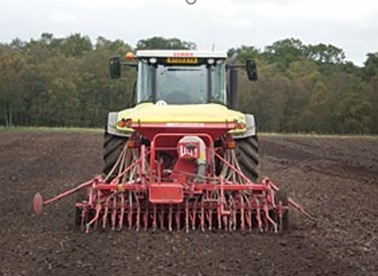When should a first wheat be treated as a second wheat?
23 September 2020With an anticipated reduction in demand due to the disruption from COVID combined with reports of quality issues leading to costly deductions and rejections, a number of malting barley growers are looking at sowing winter wheat following spring barley this autumn.
While this may be an attractive option at the moment with the ability to fix prices at decent levels growers should also consider the risk from take-all in this scenario.
Spring barley acts as an excellent host for the soil-borne fungal pathogen take-all (Gaeumannomyces tritici), which can significantly impact on yield with average losses of 5 -20% (AHDB).
By attacking the roots of plants, the ability of the plant to take up nutrients and water is adversely affected. This slows canopy growth and in more severe levels of infection leads to yellowing and stunted patches. This results in “whiteheads” producing at best small shrivelled grains or worse, no grain at all. Inspecting the roots of infected plants will show blackened, stunted roots.
What steps can growers consider to help mitigate the effects of take-all.
Varietal Choice
While no variety is immune to the effects of take-all some do have a greater tolerance. This can be seen in the AHDB Recommended lists which in addition to listing a varieties performance as a first wheat also gives the yield as a second cereal.
Sowing Date
With the pathogen more active in warmer soils, drilling at risk fields later and delaying sowing until soils are cooler will see crops exposed to lower levels of infection and choosing a variety better suited to later drilling is also important to optimise yield.
Cultivation Type
Take-all is carried over on stubble and trash, so crops established by direct drilling or min-till systems are exposed to a higher risk early on in growth than those using a plough. However min-till can leave a firmer seed bed after drilling which inhibits the disease so the effect of cultivation is not consistent. If ploughing try to firm up the seed bed.
pH
Risk from the infection are greater where roots are already poor, for example where pH is low, so fields should be tested in pH is unknown and lime applied accordingly. Conversely alkaline soils can also be badly affected.
Soil
Crops sown on lighter or poorly drained soils are more susceptible to infection however a well consolidated seedbed will help reduce the risk.
Nutrition
Take–all losses are greater in soils where nutrient levels are low, exacerbated by the poorer root development in infected plants. Encouraging crop and more importantly root development by for instance the application of nitrogen early in the spring can help reduce the severity of damage before the take-all becomes active again in the spring
Seed Treatment
The use of take-all specific seed treatments can reduce the effects of take-all in high risk scenarios, however will not entirely eliminate the infection.
Weather
While nothing can be done about the weather, warmer winters followed by a dry spring and summer can lead to higher levels of take-all infection developing and greater damage to yield ensuing.
Take-all can lead to serious reductions in wheat yields with many different factors all impacting on the scale and severity of infection. It can also be seen that the effective use of cultural control methods can help reduce the levels of infection and ultimately the effect on crop yield and profitability.
Sign up to the FAS newsletter
Receive updates on news, events and publications from Scotland’s Farm Advisory Service

